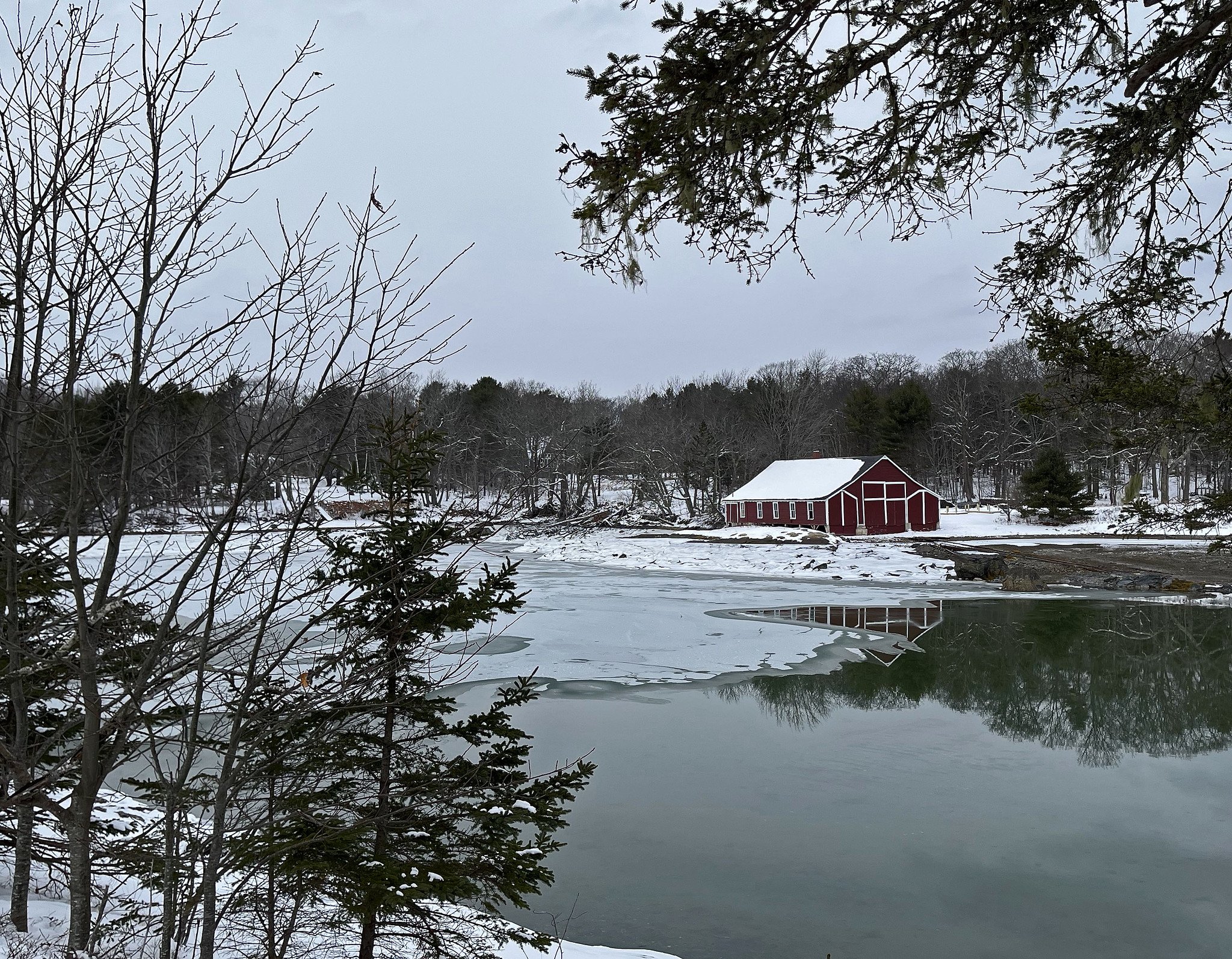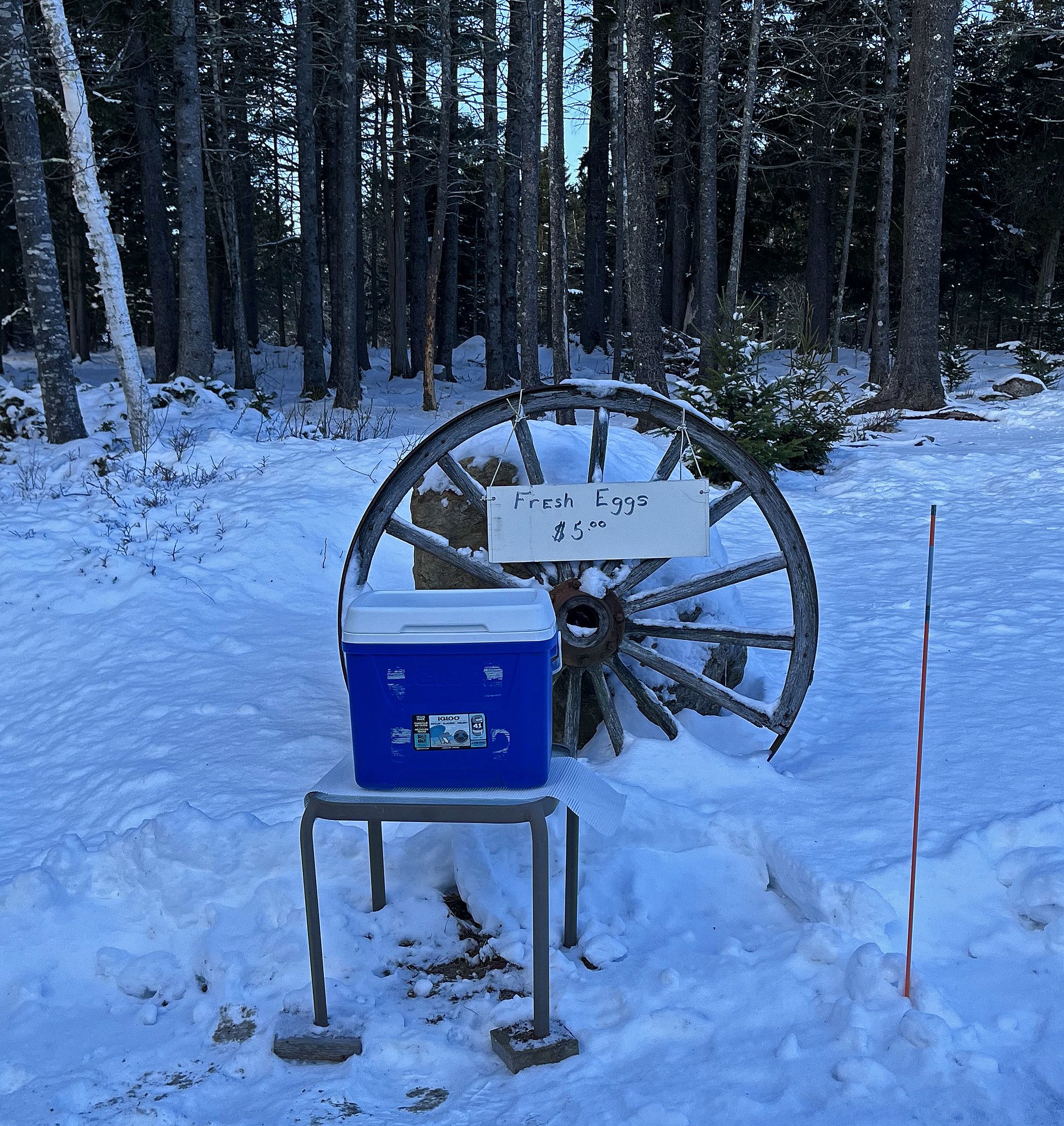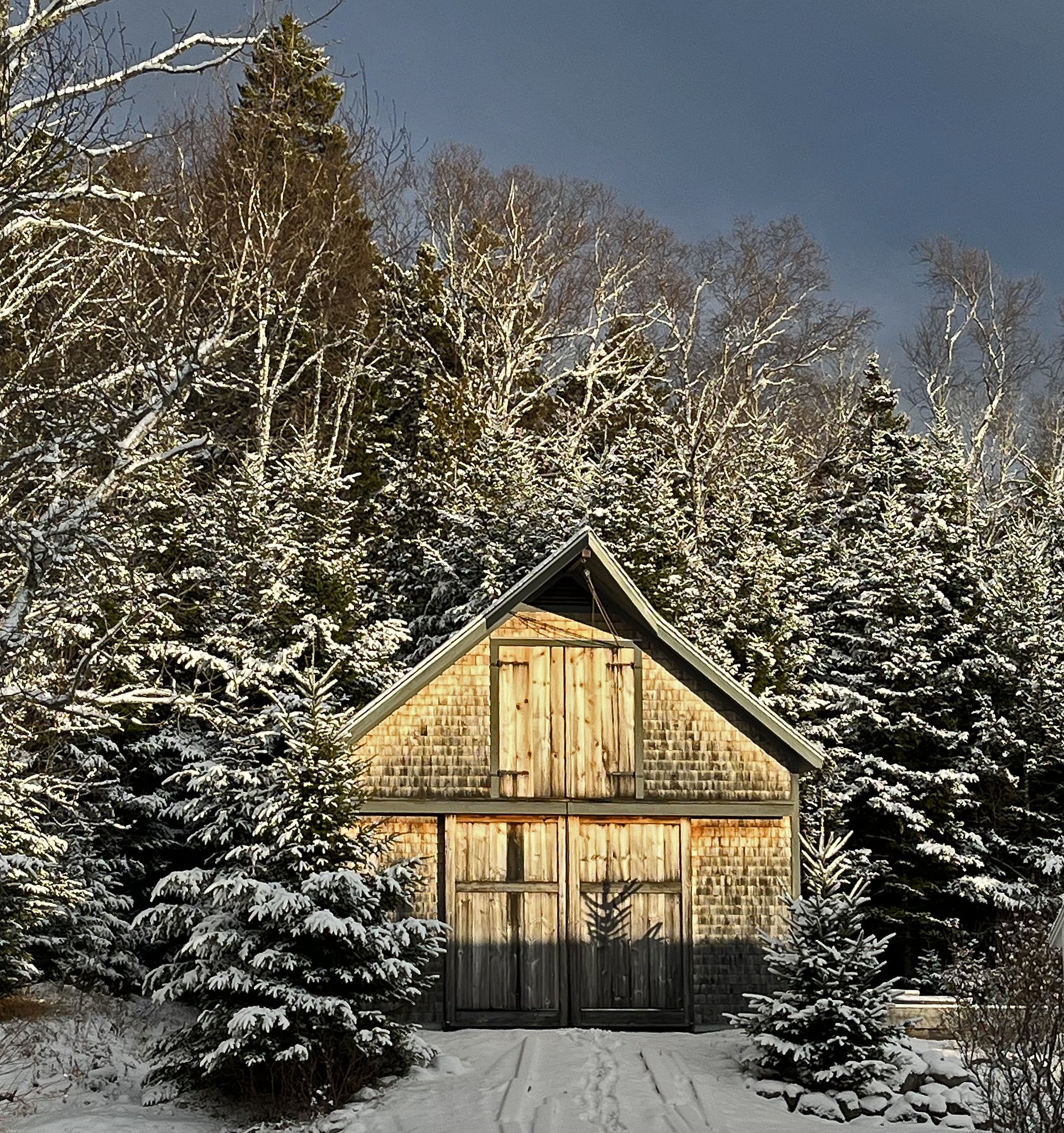January is the month of Janus, the Roman god of beginnings and transitions, the god of the end of the old year and the beginning of the new one. This year, January’s seasonal transition here on the Maine coast was seamless and even lovely at times. It stood in stark contrast to troubling times elsewhere.
We hope that a few postcard-quality images that share Down East Maine’s good fortune will offer a bit of relief to those who need it. As with many postcards, these are meant to carry with them the friendly message to some of you of “We wish you were here” and, to others, the message of “We’re glad you’re here.”
We begin as usual with our monthly record images of the western mountains of Mount Desert Island, as seen across Blue Hill and Jericho Bays from Brooklin’s Amen Ridge; then, there is the harbor house on Harbor Island, which protects Naskeag Harbor; followed by Blue Hill and Blue Hill Bay’s sea ice being erupted by a rising tide, and, finally, the landmark red boat house in Conary Cove on a dramatically dark and icy winter’s day:
















































































































